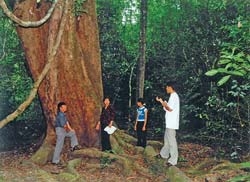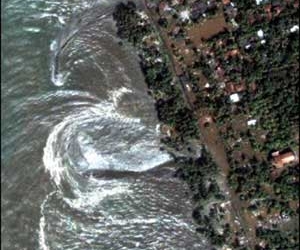The sand dunes scattered across the Kumtag Desert in Dunhuang produce a distinctive sound when the wind blows through them.
The singing sand dunes vary in size, with the tallest reaching 1,715 meters. Upon closer inspection, they even display a rich array of colors, from yellow and white to green and black. While these dunes are not exclusive to Dunhuang, the singing sand dunes in this region lie along the Silk Road, an important trade route between Central Asia and Europe for 1,500 years since the 2nd century BC.

Singing sand dunes in Dunhuang. (Photo: Lonely Planet).
The quality of the sand grains is just one of the factors that cause the dunes to “sing.” The grains vary in size from fine to medium, allowing them to move and interact more effectively. When combined with their shape, this creates resonance and distinct frequencies. Round and smooth grains produce better sounds. The shape of the dunes also contributes to the sound. The slope of the sand hill affects the level of interaction between the sand grains. Additionally, suitable wind conditions are necessary to blow the sand grains sufficiently to produce sound. When the wind is strong, the dunes emit a loud booming sound, but in lighter wind, the sound is more melodious.
The surrounding structure is also one of the reasons for the emergence and amplification of the sound, as the hills create a focused airflow that directs wind into specific areas around the dunes. When the wind blows the sand grains, friction occurs, causing the layers of sand to vibrate and generate sound. The air pockets between the grains can act as resonating chambers, enhancing that sound. The arid climate is another factor that contributes to sound production. This is why singing sand dunes are found in desert environments. Low humidity increases friction between the sand grains, creating sound when they rub against each other. The combination of grain vibrations, resonance, and air pockets leads to the distinctive sound of the dunes.
Besides Dunhuang, singing sand dunes have also been discovered in Inner Mongolia, Xinjiang, Gansu, and Ningxia. The Namib Desert in Namibia and the Mojave Desert in California also feature similar dunes. Researchers closely monitor signs of erosion and the impacts of traffic on the dunes. Despite the large number of tourists, each night the desert winds sweep through and erase all footprints, restoring the original pristine appearance of the dunes.





















































